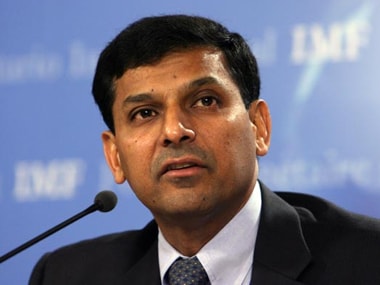In what has been hailed near unanimously as a positive move, the much awaited Raghuram Rajan rate cut was delivered in a double dose of 50 basis points on 29 September. Pressure from corporates and the government had been quite immense on this front. The “all knowing” Subramanian Swamy had, in fact, gone to the extent of saying that Rajan should be removed as RBI Governor if he doesn’t come through with a rate cut. Not that Rajan would have really cared for what Swamy thought, but in any case it just goes to indicate the pressures under which central bankers operate.[caption id=“attachment_2448956” align=“alignleft” width=“380”]  RBI Governor Raghuram Rajan.[/caption] Firstly, why the cut? By all traditional measures, inflation has come down to Rajan’s preferred band of 4-6 percent. Even using the more accurate/leading indicator measure of M3 growth rates, which have been around 10 percent these days, price increases are likely to be in the range of 3-4 percent (assuming real GDP growth of around 6-7 percent). So using the standard economic metrics, there was a lot of merit in cutting rates. Of course, why Indians should tolerate an annualised built-in rupee value debasement of 4 percent or even 2 percent for that matter is still an important issue. But that’s an issue so far removed from policy debating circles that it’s not worth going into for now. So what’s the beef with the cut? The issue is that we no longer have normal markets that can be judged using normal metrics. As Chris Powell of GATA (Gold Anti-Trust Action Committee) puts it: “There are no markets anymore, just interventions.” So the question of whether a rate cut was right or wrong would depend on whether the reader thinks we are living through near-normal times, or, as I believe, in a “once-in-a-multi century epochal phase”. As I have written earlier, history may judge recent years as the dying phase of central banking that almost all of us have lived through without explicitly taking cognisance of the same. We are living though a gigantic “central bank-fuelled debt bubble” and, when it bursts, it certainly will make the 1930s as well as 2008 look like a typical Sunday school picnic. The longer central banks postpone the crash through artificially low interest rates, zero-interest rate policies, quantitative easing, etc, the worse will be the consequences. What the RBI’s rate cut does indicate is that Rajan probably doesn’t understand the nature of the bubble we are living through. While he does talk about high asset prices, he misses the underlying casual factor of the expansion of central bank balance-sheets as well as their relentless mission creep into managing asset prices, especially bonds. Imagine Petrobras (a corrupt oil company of the bankrupt Brazilian government) selling 100 year bonds just a couple of months back. Or the treasury yields of deeply indebted/bankrupt countries priced at low single digits for 30 years. The epicentre of asset mispricing is clearly the bond markets and if Rajan really understands the mispricing of bonds and the risks involved thereof, why would he cut rates? India’s journey with central bankers has come a long way since the dark days under YV Reddy and D Subba Rao (though very few pundits realised then, or, for that matter even now, the bubbles they had inflated). These were the Governors who would expand M3 at 20 percent plus and claim additionally that they were, in fact, running hawkish monetary policies. These were the Governors who allowed the Congress to run its hare-brained socialist/work culture-destroying schemes by significantly underpricing capital. In that historical context, we have transitioned to a much more responsible monetary leadership these days. Perhaps to expect a central banker to understand a bubble in central banking is too much. But that’s exactly the position we are at today. Shanmuganathan “Shan” Nagasundaram is the founding director of Benchmark Advisory Services – an economic consulting firm. He is also the India Economist for the World Money Analyst, a monthly publication of Mauldin Economics. He can be contacted at shanmuganathan.sundaram@gmail.com
Last week, RBI Governor Raghuram Rajan gave us a surprise double-barrel rate cut, indicating the pressure on him to cut rates. But the world is still printing too much money and a crash worse than 2008 is still in the works.
Advertisement
End of Article


)

)
)
)
)
)
)
)
)



